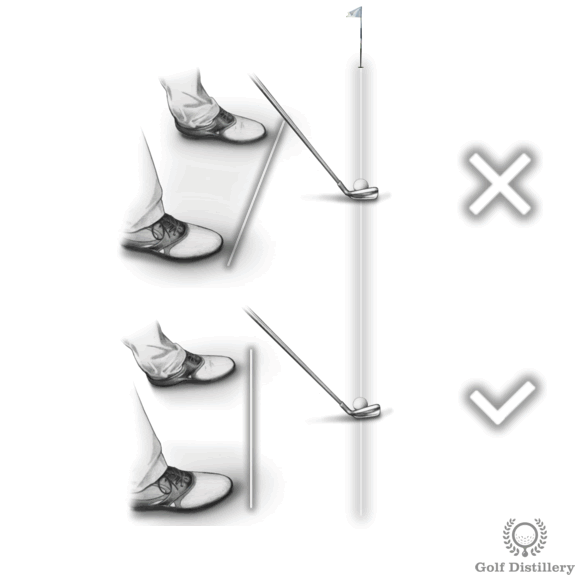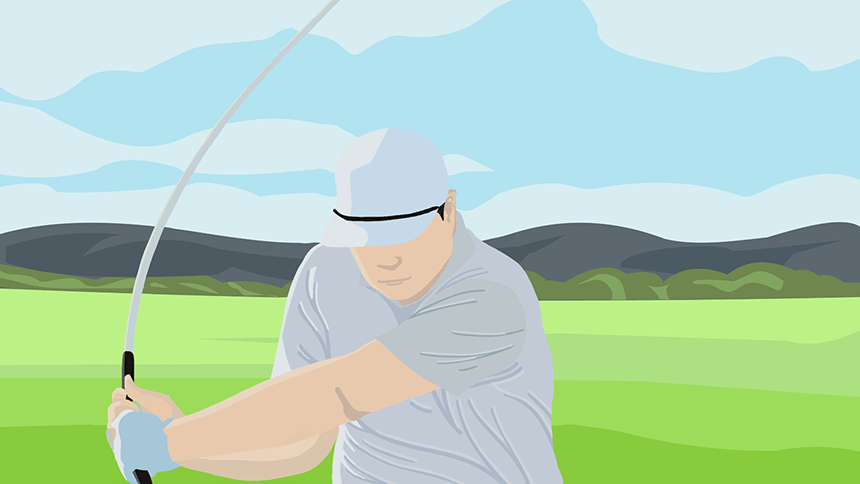
There are two main golf swing styles: out-toing-in and inside-to -out. Whether you're a beginner or an advanced golfer, you can benefit from understanding these swing patterns to improve your game. We'll be discussing the In-to - Out swing path and Clubface angle when impact. Ben Hogan's strategy for hitting the golf ball hard will be discussed. Start by measuring divots.
Out-toin golf swing paths
Over-the-top golfers are known to have a out-to-in swing path. They are too heavy on their upper bodies and too focused on their backswing. This can result in large slices and violent hooks. Fortunately, a correct set up can prevent this from happening. For the most effective out-to–in path, align your feet, hips, shoulders and target.
A golf swing path that is right-to–left produces a left-to–right shot, also known as a draw. A draw transfers more energy to the ball and is generally longer and wider than an fade. An outside-to–in swing path has a larger clubface, but it does not have the same power at impact. This swing path can also be called an over-the top or slice.

Clubface angle at impact
The most important factor in determining how a ball will travel is the clubface angle. If the clubface is straight to the path of a ball, it will not produce any curves. However, a closed clubface can cause a ball curve to the left or right. Because the clubface angle at impact does not match the ball's path, this is why the ball will curve to the right or left.
Recent research shows that the clubface angle, at impact, may have a significant effect on the ball's flight. While this belief is well-known, it may be even more important. Numerous studies, including Dr. Michael Malaska's, have confirmed this result. Furthermore, the right-hand plays an important role when covering the golf ball and generating the proper forward lean for optimal compression. While it should not be active during the swing, the right side can have a significant influence on the clubface angle and impact.
Open clubface at impact
Your clubface angle at impact will determine the trajectory of your ball, regardless of whether you play right-to left or in-to out. A clubface that is open means the face is visible when the club hits the ball. A closed clubface results in an out-of-bounds flight. Your swing mechanics can be improved to improve your shots. This article will offer some easy tips for correcting your open clubface during impact.
An open clubface will give your shot more loft while setting up your swing. The opposite is true. A closed clubface will lower your shot's trajectory and take away the loft. Your shot distance can be greatly affected by the clubface angle. An open clubface at impact can be caused by several factors, such as poor set-up or poor rotation. Wide open clubfaces at impact can be caused by hip sliding, early extension, and other factors such as hip sliding. Open clubfaces can also be caused by a lack of shaft lean or an open clubface at impact.

Ben Hogan's method for smashing the golf ball
Ben Hogan's famed left-hand swivel, and his ability of hitting the ball high into the air are all due to his unique approach to backswing execution. Hogan had a difficult time hooking the ball when he was young, but soon realized that the key to his success was using a slightly cupped left wrist at his top of his backswing. The combination of a weak left grip and a cupped right wrist made it difficult for Hogan to get too far to his left.
Many players attempt to imitate Hogan's famous shot, but few succeed. Hogan wasn't a great putter like some of golf's most renowned players. Hogan once suggested that putting be removed from golf altogether. Because he was a better putter than a ball striker, this is probably why he suggested that putting be eliminated altogether. He also preferred the MacGregor Spur Putter which was at that time considered advanced.
FAQ
What is a handicap, exactly?
When playing golf, you may find yourself having trouble keeping up with others. It is possible that you have difficulty scoring well because of your slow or fast pace. To overcome these problems, you could hire a caddy to carry your bag for you.
But, beginners should make use of the services offered at your local golf course. They will calculate your handicap using age, gender, height and weight as well strength and skill levels.
Your handicap will then serve as a guideline for calculating your score. Your handicap will indicate which group you fall into. This will allow your ability to compete against similar players.
How often do I need to play golf?
It depends on how many hours you have. However, most recommend practicing at least twice per week.
You should aim to play at least four times a week if your goal is to become an expert player.
How can I practice my golf swing properly?
Practice makes perfect! Practice is essential for any sport. You have to practice if your goal is to improve your ability to play golf. You can practice until you feel comfortable with the basics of the swing.
You should practice using both your hands. You should start with the shortest shots. Next, you can work on longer drives. Finally, practice chipping and putting.
What time is best to play Golf?
Between May and September is the ideal time to golf. There is rarely any rain during this period and the temperatures are usually moderate.
It can get very cold in winter. It is also difficult to walk on the fairways due to snowfall.
The grass can grow too high in spring and autumn making it difficult to see the flagstick.
What should I bring for a golf trip?
Keep some snacks and drinks handy. Also, remember to pack your favorite tee shirt, sunglasses, gloves, and towels.
What are the different types of golf courses?
Golf courses come in all shapes and sizes. Some courses are specifically designed for beginners while others are more suited to the experienced player.
Some courses are near rivers, lakes, mountains, or forests. Others are situated in urban areas. You will find everything from public golf courses to private estates.
Statistics
- In the United States, women made up 25 percent of golfers in 2021, which was up from 19 percent in 2011, and junior female golfers account for 35 percent or 1.1 million golfers.[50] (en.wikipedia.org)
- They do this by means of assessing and rating courses according to the average good score of a "bogey golfer," a player with a handicap of around 20. (en.wikipedia.org)
- Professional golfers typically make between 60% and 70% of greens in regulation. (en.wikipedia.org)
- They do this by means of assessing and rating courses according to the average good score of a "bogey golfer," a player with a handicap of around 20. (en.wikipedia.org)
External Links
How To
How To Hit A Perfect Bunker Shot
A bunker shot, a type or golf shot that aims at a particular spot on the green (the holes) to ensure your ball hits the ground without bouncing off of the surface, is one example. This is done by taking advantage of the slope of the green. The goal is to direct the ball as far as possible towards hole.
Playing golf requires you to determine the best line for reaching your target. You need to take into account many factors, including how far away you are from the target and what terrain you are hitting through. Also, weather conditions, bounce requirements, and whether the ball needs bouncing off the ground.
To achieve a perfect bunker shot, you must first understand its physics. It is important to determine whether you are going uphill, or downhill. If you're facing uphill, you'll need to use a drawing club. You should swing with a fade when you're looking downhill. Next, determine the speed at which your body can move to stop the ball hitting the green. You can do this by measuring the angle between the ball and the direction you're traveling. Finally, you'll need to know the size of the bunker you're aiming at.
Once you've figured these things out, you can start swinging. Just like any other shot, you should be able to swing the ball hard enough that it passes the club head's face but slow enough to prevent it from bouncing off of the green. You can start your approach once you have found the right speed, trajectory and direction. Slowly approach your ball until you're close enough to the landing area. Before you release the ball, take a final look at it. If all goes according plan, you will be able to make a perfect bunker shot.